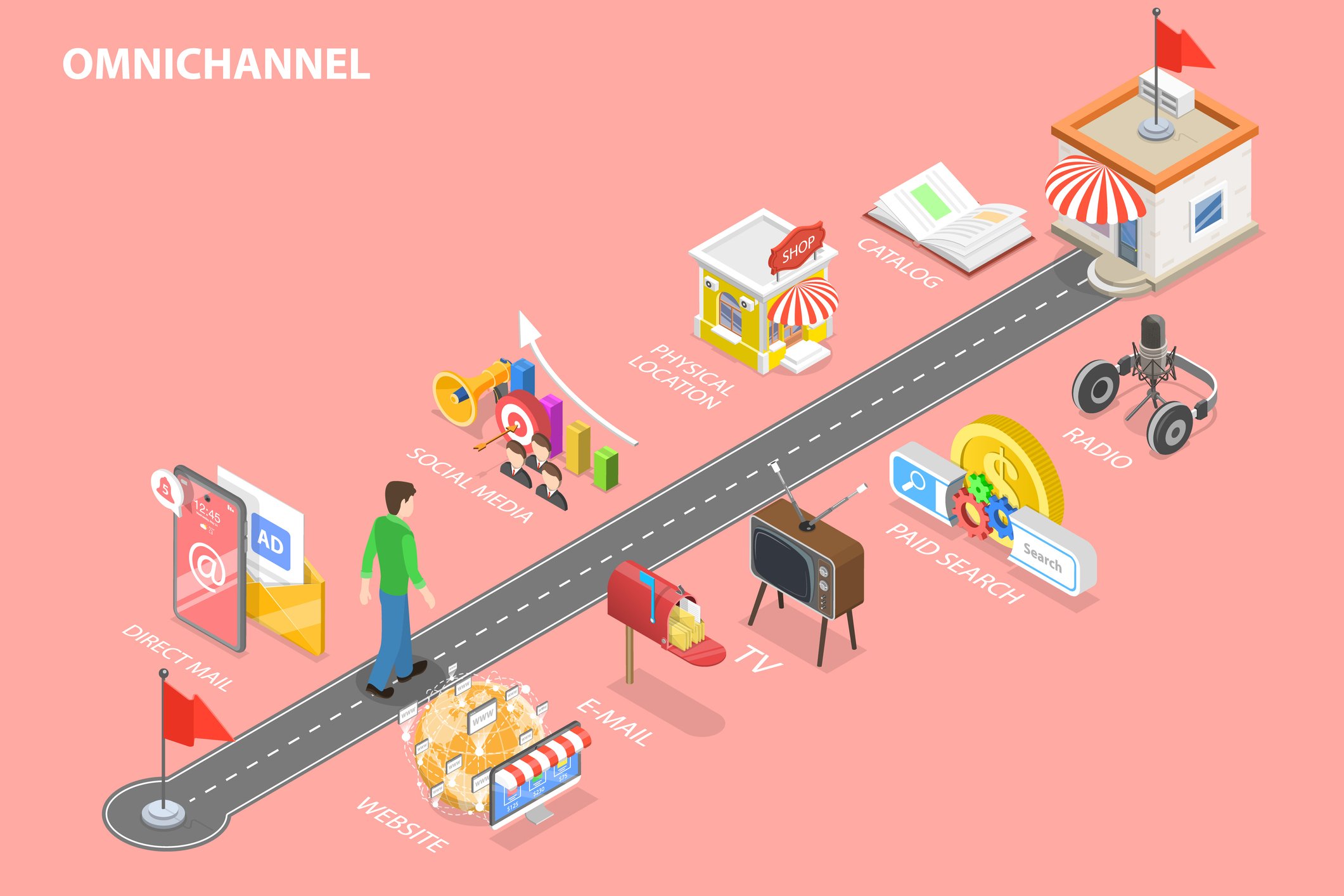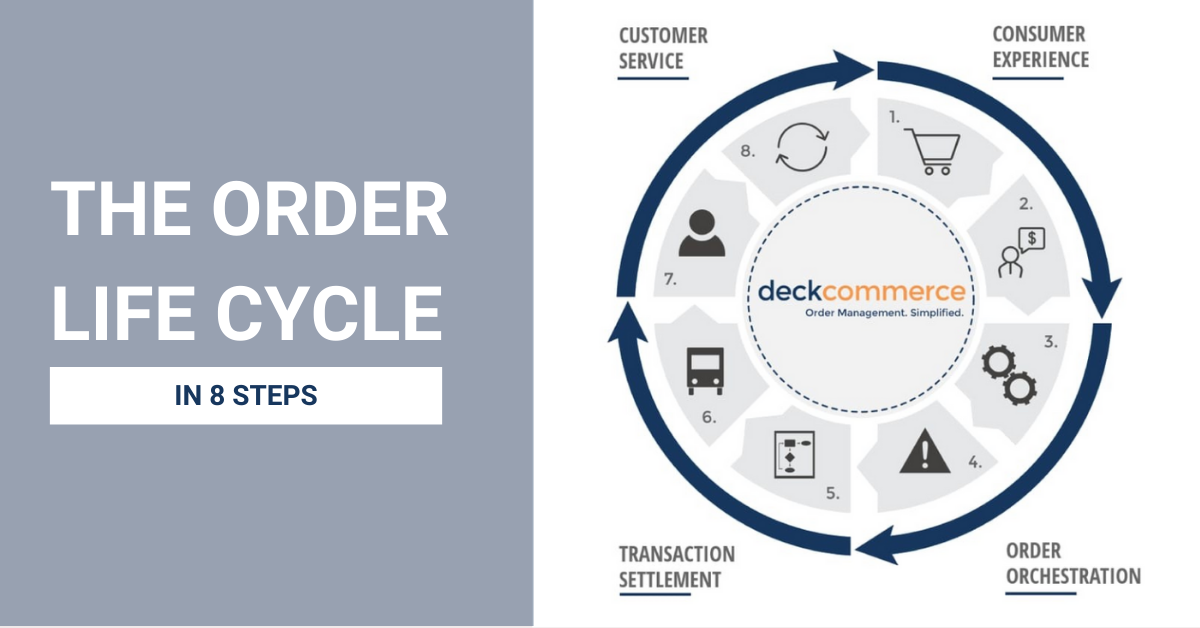
Evolving consumer expectations and shopping behaviors have forced many footwear brands to pivot towards direct-to-consumer (DTC) strategies, with brands like Nike, Adidas, and Under Armour leading the way.
This guide aims to equip brands with insights for enhancing DTC order management processes, spotlighting the unique challenges within the footwear sector and strategic technology adaptations needed for success.
We’re roadmapping what it takes for footwear brands to master DTC fulfillment strategies, highlighting the significance of moving to composable commerce and the vital role of advanced Order Management Systems (OMS) in this transition.
Through a comprehensive examination of market trends, technological needs, and omnichannel fulfillment strategies, our guide is the roadmap for footwear brands striving to stay ahead in a competitive digital marketplace.
A Growing Online Market Requires a Shift to DTC Channels

The footwear industry is stepping into unprecedented growth, with a projected market increase of 4.3% in 2023, according to Statista.
This surge is further amplified in the Direct-to-Consumer (DTC) arena, where e-commerce growth exceeded 45% last year, as reported by eMarketer, and a remarkable 64% increase in web traffic for top DTC footwear sites. Currently, online revenue accounts for approximately 15% of total revenue in the footwear industry but is witnessing a rapid YoY growth of 30-50%.
Moreover, the sector faces unique challenges, such as a 35% return rate—triple that of general e-commerce, highlighting the critical need for strategic adjustments in order management and customer experience strategies.
These shifts underscore the importance of adopting innovative order management solutions to drive growth with extensive tech stack overhauls.
Unique Pain Points of Order Management for Footwear Brands

1. Product Assortment Creates Inventory Complexity
Managing inventory is a complex challenge due to the range of sizes, colors, and widths each product can come in, multiplying the number of SKUs a brand must track and manage.
This complexity is compounded by the need to distribute inventory across various locations and sales channels, requiring sophisticated inventory feeds and assortment management to maintain accuracy.
Limited Inventory Visibility
Many footwear brands rely on ERP (Enterprise Resource Planning) systems that may not be flexible or agile enough to adapt to the dynamic demands of direct-to-consumer (D2C) sales.
These systems may require extensive customization or even complete replacement to accommodate the needs of D2C operations.
Challenge |
Impact |
|
Incompatible Back Office Tech Stacks |
Back-office technology stacks are often designed for wholesale distribution, traditional demand planning, and supply chain management. These systems may not possess the capabilities required for seamless D2C operations, resulting in slow and costly adaptations. |
|
Lack of Inventory at Point of Sale |
Many footwear brands struggle with maintaining accurate inventory levels at their retail locations. This can lead to situations where customers visit a physical store expecting to find a specific product, only to be disappointed due to stockouts. |
|
Lacking Enterprise-Wide View of Inventory |
Footwear brands often lack a comprehensive, enterprise-wide view of their inventory. This fragmented perspective makes optimizing stock levels, allocating resources, and meeting customer demands challenging. |
2. Flexibility in Existing Tech Stacks
Historically, footwear brands have not been known for being technologically advanced. But it’s not their fault! The tech available hasn’t allowed them to be innovative, leading to overreliance on backend systems. The result is technological complacency and solutions that follow the old idiom - square peg, round hole.
Many use outdated back-end systems that are complex and challenging to upgrade, with multiple ERPs or WMS that need flexible technology to integrate without extensive overhaul.
This technological adaptation challenge emphasizes the necessity for a solution that allows brands to quickly adapt and flexibly sell products, leveraging existing systems to maintain operational continuity and meet the dynamic needs of direct-to-consumer sales.
3. Call Center & Customer Support Challenges
Customer support has evolved into a critical aspect of success. However, meeting the heightened expectations of modern consumers can be a significant challenge, especially for organizations that lack the necessary technological infrastructure.
Inventory Lookup
Call center agents need access to real-time order and inventory information to assist customers effectively (and be able to easily look up an order even without an order number). This can be challenging for footwear companies with complex inventory systems and multiple sales channels.
Lacking Automation Efficiency
Efficiency is crucial for call centers and customer service operations. This includes automating processes like split shipments, handling custom product configurations, and managing returns. Automation not only reduces manual workload but also enhances the overall customer experience.
4. Returns & Exchanges
An industry that experiences 35% of orders returned, 3x that of general eCommerce, needs return solutions that can keep up. In addition to the quantity of returns, the industry also faces unique challenges and painpoints.
Pain Points |
Challenges |
|
Complexity of Returns |
Managing returns for a wide range of product variations, including size mismatches, fit issues, and style preferences. |
|
Customer Expectations |
Meeting consumer expectations for a hassle-free returns process, with delays or errors leading to customer dissatisfaction. |
|
Workforce Impact |
Traditional manual handling of returns and exchanges puts a significant burden on the workforce, requiring extensive manual processes. |
|
Customization and Personalization |
Dealing with returns of custom-made or personalized products, adds complexity to the returns process. |
|
Building Brand Loyalty with Positive Experience |
Transforming returns into a positive customer experience by offering flexible return options such as return to gift cards or in-store returns. |
|
Inventory Management |
Returns impact inventory management, requiring efficient restocking or refurbishing processes to maintain accurate inventory levels. |
|
Multi-Channel Returns |
Efficiently consolidating returns from various sales channels, including online stores, marketplaces, and retail locations. |
|
Return Fraud Prevention |
Identifying and preventing return fraud, with systems in place to detect and address fraudulent returns effectively. |
|
Sustainability Concerns |
Prioritizing the sustainability of returns to minimize waste and reduce the environmental impact of returned products. |
5. International Expansion
DTC brands face a multitude of complexities when entering international territories, from managing diverse inventories to addressing varying customer preferences and local regulations to managing multiple currencies. The absence of efficient order management solutions can hinder their ability to navigate these challenges effectively.
Inadequate order management technology often results in operational bottlenecks, delayed shipments, and customer dissatisfaction. It can even lead to costly errors in compliance and taxation.
As a result, international expansion efforts can falter, and the potential for growth in new markets remains largely untapped. A tailored order management system can serve as the linchpin that empowers brands to expand confidently, delivering on their promises to customers worldwide.
The Transition to Composable Commerce: Uniting Innovation & Flexibility

The complexity of product assortments, inventory visibility issues, inflexible tech stacks, and the ever-increasing demands of customers have illuminated a critical need for innovative solutions.
It's these very challenges that have catalyzed the rise of Composable Commerce–a strategy that offers modularity, agility, and customization, allowing brands to build a tech ecosystem tailored to their unique needs.
But what sets Composable Commerce apart, and how does it directly address the unique challenges faced by the footwear industry?
Modularity & Customization
Composable Commerce breaks down the monolithic approach to commerce technology into modular components, much like building blocks.
This modularity allows brands to select and integrate the specific functionalities they require, creating a tailored tech stack that aligns perfectly with their operational needs.
For a sector where product assortments vary significantly, this modularity is a game-changer.
Brands can seamlessly add new modules for managing inventory complexity, streamline customer support processes, or enhance returns and exchanges – all without disrupting their existing technology infrastructure.
Agility & Scalability
A composable approach enables brands to adapt quickly to changing market dynamics, customer demands, and emerging sales channels. Whether it's expanding into international markets or launching new product lines, the agility of a Composable Commerce approach ensures that brands can keep pace with their ambitions.
Integration for Seamless Collaboration
It’s not just about flexibility; it's also about collaboration. These modular components are designed to integrate seamlessly with each other and with existing technologies.
For the footwear industry, this means that specialized order management tools can harmonize with customer support systems as well as their existing backend ERP and WMS systems, providing a holistic view of operations and not requiring brands to do a complete “rip and replace.”
Additionally, integration extends to e-commerce platforms, marketplaces, and other essential sales channels. Footwear brands can diversify their reach while maintaining a unified order management system, optimizing their presence in the digital marketplace.
Enables Omnichannel Fulfillment
The agility and modularity of Composable Commerce empower footwear brands to seamlessly integrate multiple sales channels, creating a cohesive and efficient omnichannel fulfillment strategy.
Now, let's explore why omnichannel fulfillment is an absolute necessity for footwear brands in today's retail landscape.
Why Omnichannel Solutions for Footwear Brands are a Must

Modern consumers expect seamless and convenient interactions, whether online, in physical stores, or through various marketplaces. Omnichannel fulfillment is the key to meeting those expectations.
Here’s a look at fulfillment options that have become staples in retail customer experience.
Buy Online, Return In-Store (BORIS)
BORIS is a retail strategy that allows customers to purchase products online and return them to a physical store. This strategy enhances the convenience of online shopping while providing a seamless way for customers to address any issues or returns in person.
Significance of BORIS
Combines the advantages of online and in-store shopping. It offers customers the flexibility of online purchasing and the option to return or exchange items in a physical store, leading to higher customer satisfaction and increased foot traffic to brick-and-mortar locations.
Buy Online, Pick Up In-Store (BOPIS)
BOPIS bridges the gap between online and in-store shopping by allowing customers to choose the convenience of online shopping while having the option to pick up their items quickly in person.
Benefits of BOPIS
BOPIS benefits customers by offering flexibility, reducing shipping costs and times, and ensuring product availability. For brands, it encourages foot traffic to physical stores, enhances customer loyalty, and reduces the operational complexities of home deliveries.
Ship-from-Store
Ship-from-store is a fulfillment strategy where retail stores are used as mini-distribution centers. In this strategy, orders placed online are fulfilled and shipped directly from physical store locations. It optimizes inventory management and order fulfillment by utilizing existing store inventory for online orders.
How SFS Optimizes Inventory Management
Ship-from-store optimizes inventory management by ensuring that products are shipped from the nearest available store, reducing shipping distances and costs. It also maximizes the use of existing store inventory, reducing the need for additional warehouse space.
Curbside Pickup
Implementing curbside pickup for footwear brands allows customers to place orders online and receive orders in their vehicles at a designated curbside location in the store parking lot. It provides a contactless and convenient shopping experience, particularly when customers prefer not to enter the store.
Significance of Crubside
Curbside Pickup gained significant importance during the COVID-19 pandemic as it offered a safe and convenient way for customers to access products without entering crowded stores. It remains relevant as it enhances flexibility and caters to changing customer preferences for contactless shopping.
Deck Commerce: A Order Management System Tailored for Footwear Brands

A robust order management system is the linchpin for success when building a composable commerce infrastructure. An OMS is the central hub for managing orders, optimizing inventory, and enhancing shopping experiences.
Why Deck Commerce?
At Deck Commerce, order management isn’t just something we do, it’s all we do. We’ve been helping enterprise footwear brands conquer the ecommerce world for over 20 years.
That experience taught us what order management capabilities footwear brands need to put their best foot forward and turn every customer into their best customer.
And it’s why major footwear brands like New Balance, FILA, Mizuno, TOMS, Native Shoes, and Ardene have partnered with Deck Commerce to power their order management processes.
Here’s how Deck Commerce is pivotal in addressing footwear brands' specific needs and challenges
Enterprise-Wide Inventory Visibility & Management
Deck Commerce provides cross-channel inventory visibility and optimal control for accuracy, regardless of the number of SKUs. With this kind of visibility, you’ll never lose a sale due to inventory issues again.
Inventory management features include:
- Aggregate & update inventory across channels (online, stores, marketplaces, dropshipping, etc.)
- Quickly view available-to-sell (ATS) inventory at a glance
- Expose inventory to customers in all channels
- Inventory allocation % to specific channels
- Update inventory quantities in real-time
- Safety stock (even by SKU)
- Set preorder & backorder quantities
- Bulk exchange & cancel items
Easily Implement Omnichannel Fulfillment
Deck Commerce has prebuilt workflows built for and trusted by high-volume omnichannel retailers, so you don't have to "DIY." Feel confident you're implementing a scalable solution that both your internal teams and customers will love.
Deck Commerce empower retailers with a “buy anywhere, fulfill anywhere, return anywhere” business model— improving both the customer experience and overall profitability.
- Quick order lookup for customer support
- Curbside pickup
- Buy online pickup in store (BOPIS)
- Reserve online pickup in store (ROPIS)
- Ship from Store / Store fulfillment
- Buy online return in store (BORIS)
- Cross-channel inventory allocation & visibility
- Split shipments
- Drop shipping
- Node configuration portal to manage all fulfillment locations
Smart Footwear Order Routing & Distributed Order Management
With Deck Commerce, brands can leverage prebuilt smart routing workflows that:
- Automate up to 98% of footwear order processes
- Increase fulfillment margins
- Centralize all orders
- Automate channel-based compliance & smart fulfillment rules (fill or kill, packing requirements, etc.)
- Enable configurable workflows for digital products, bundles & kits, grace periods
Easily Configure Preorders & Backorders
Configure automated workflows for preorders and backorders that work for your business and don't wreck inventory levels.
Offer Custom Products Without Headaches
Deck Commerce can capture custom information captured by the consumer at the item level and send only that item through a custom workflow—allowing teams to confirm the order before it is processed (while automatically processing any other item in the order).
Built-in support for International Market Expansion
With Deck Commerce, brands can sell anywhere in the world with an OMS built to handle multiple currencies, languages, & geo-specific workflows. Tap into new markets and grow your brand globally.
Seamless Integration for Composable Commerce Mastery
Deck Commerce has 60+ prebuilt integrations with some of the best eCommerce software providers, helping ensure every order— from storefront to front door— drives operational efficiency and customer satisfaction.
We also have accelerators with top business systems like Oracle, SAP, Epicor, and Microsoft Dynamics (to name a few), ensuring footwear brands can continue to work with the systems they already have in place.
With our "plug and play' architecture, you can use the technology you already know and love or easily swap or add more—without your team having to custom-build a thing.
Native Shoes Case Study

Discover how Native Shoes revolutionized their returns process with Deck Commerce in our case study. Previously burdened by a cumbersome, manual system handling over 50,000 returns annually, they transitioned to a fully automated process. This change saved 1,700 hours per year and significantly improved customer service efficiency and satisfaction.
Tailored Order Management for Shoe Companies

Deck Commerce offers a tailored solution that addresses the industry's unique challenges. From managing complex inventories of styles, sizes, and colors to automating high return processes and seamlessly integrating omnichannel fulfillment, Deck Commerce is engineered to meet the specific needs of the footwear sector.
Take the step towards operational excellence and enhanced customer satisfaction—request a demo of Deck Commerce today and see how our specialized OMS can propel your brand forward.






.png?width=2000&height=2000&name=Blog%20Directory%20CTA%202000x2000%20px%20(2).png)






.png?width=2000&height=2000&name=Blog%20Directory%20CTA%202000x2000%20px%20(3).png)
